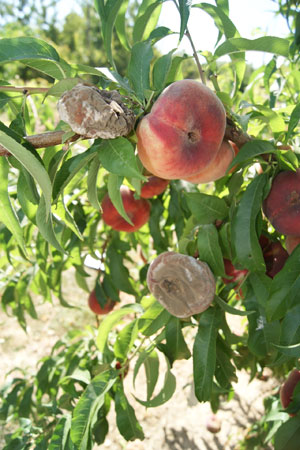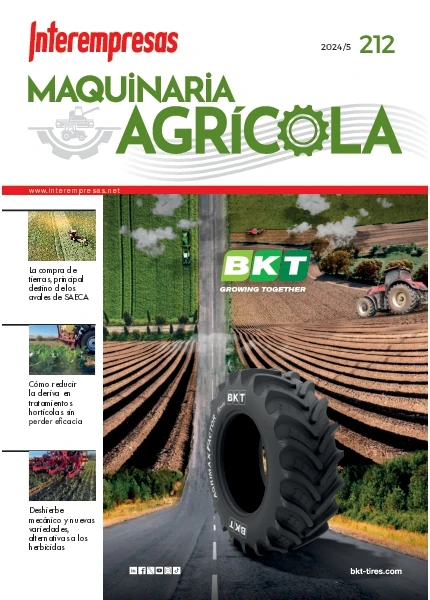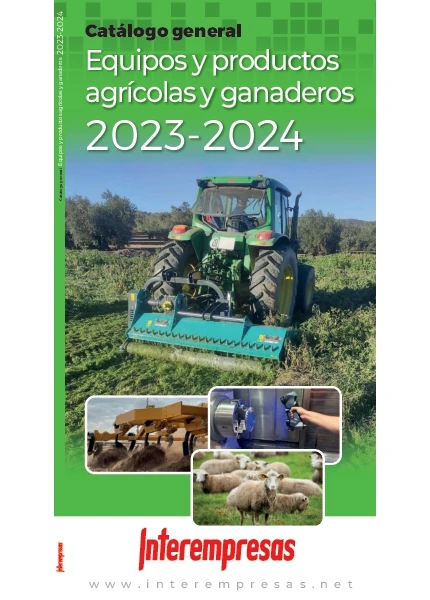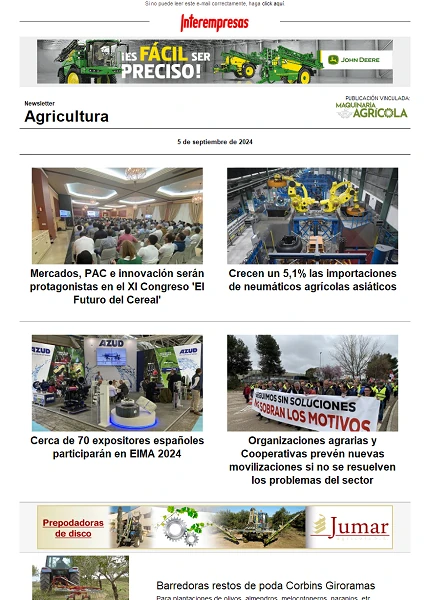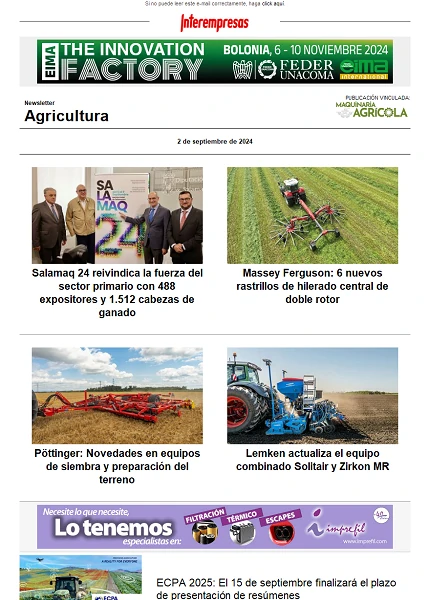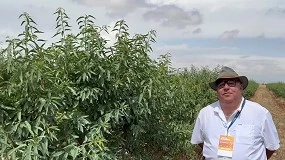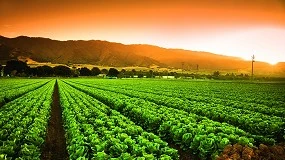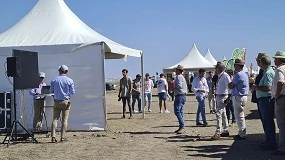The latest in varietal innovation in the 15th exhibition of peach and Nectarine varieties
August 29, 2011
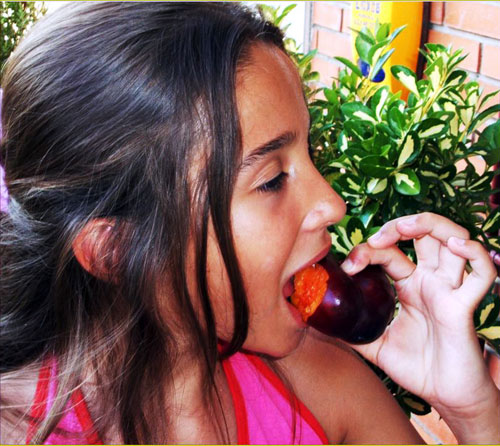
Developments in Spain of production of peach, depending on type of fruit in the period 1991-2010, shows a substantial increase of production of Nectarine, a moderate increase of the of peach red, Paraguayan included, and a very significant decrease in the production of peach or ' Pavia. In the year 2010, the Nectarine represented 40% of the production, of which 76 per cent correspond to varieties of yellow flesh and 24% to white meat, red peach accounted for 27 per cent and the 'Pavia' 33%. In the case of the peach flat or 'Paraguay', production was 102,000 tonnes with a planted area of 5,400 hectares, located mainly in Murcia, Catalonia and Aragon, according to data from the year 2010. On the basis of the foregoing, it is expected the Nectarine and the 'Paraguay', great acceptance in export markets, will continue to increase in the future, to the detriment of Red peach and mainly the pavías.
During the three last decades, the greater technological innovation in the crop of the melocotonero has been the deep transformation varietal that has produced in the sector. In alone 15 years, the range varietal has renewed almost completely in peach and nectarine, something that does not have sucedido in the case of the ‘pavías'. The constant apparition of new varieties has supposed a high availability for the producer, maybe excessive since it hampers the correct election. At the same time, it has made possible a remarkable innovation varietal in the linear available that as it finishes to expose has not translated in an increase of the consumption that in the year 2010 was of alone 4,7 per capita kg/year, very far of the 20 per capita kg/year of Italy.
The new varieties have his origin in more than 70 programs of existent genetic improvement in the world, led by United States, of where proceed 51% of the new varieties spread in the world. Europe, Italy and France lead the creation varietal, pertinent so much of public programs as of numerous programs developed by obtentores private, that in the last years have had a remarkable increase. To the equal that other producing countries, Spain finds under a strong dependency of varieties foráneas, mainly of United States, Italy and France, when having carecido until does few years of programs of own genetic improvement. Because of this strong dependency, to the access limited to many of the new varieties and to the economic conditions imposed by the obtentores/editors/ multiplicadores (payment of royalties), in the last decade have initiated in Spain around 12 programs of improvement mainly private (Provedo, Frutaria-ALM, PSB Vegetal Production), public (APPOINTMENT, IVIA) or with private and public participation (IMIDA-NOVAMED, IRTA-ASF-Fruit Futur, etcetera).
The aims of the programs of improvement have been very diverse and complementary, although in general it has tried solve the problems agronómicos of the different areas of production. The greater innovation has given in the improvement of the presentation of the fruit, especially in the referred to the colouring, calibrate, form and aptitude to the manipulations. The qualitative characteristics/gustativas have constituted another important aim. In this way, in the actuality has of sweet varieties, semidulces, balanced, sour and very sour, being the two first the ones of greater acceptance by part of the consumers.

The social premises of Gimenells hosted the 15th exhibition of varieties of peaches and nectarines which saw a large influx.
The nectarine is the group with a greater dynamism varietal and to the that the mejoradores have devoted him greater effort in the last years. In consequence, the availability of new varieties is elevated and diversified regarding periods of maduration (of May to September), productive behaviour, requests in wintry rest, rusticity, periods of flowering, colouring and characteristic gustativas (subácidas, semidulces, dolces and sour). The range varietal available in the actuality characterises by his high colouring and sweet flavour, in the majority, being the introduction of the variety ‘Big Top' and his remarkable impact in the producing sector, the most remarkable fact from the point of view of innovation varietal of the last 15 years. The majority of the programs of improvement have created series varietales with similar characteristics regarding the typology of the fruit (flavour), presentation and quality although covering a wide calendar of maduration.
With regard to the typology of the fruit, the progress has been remarkable especially in the obtaining of new varieties of Paraguayan. In concrete, fits resaltar the advance attained to the hour to expand the calendars of maduration, the colouring and the calibrate of the fruit, in the quality of the closing of the cavity pistilar and in the quality gustativa of the fruit, being the practical whole of the new obtainings of sweet and aromatic flavour.
The eruption constant of new varieties of sweet flavour and greater color ever, has been the most remarkable fact varietal innovation in all varietal groups. This is due to the good reception given among the majority of consumers, both in the domestic market and for export, regardless of the country. Thanks to the European ISAFRUIT project (6th Framework Program: www.isafruit.org), has announced that 72% of consumers in five EU countries (Spain, Italy, France, Poland and Germany), where testaron 11 varieties of peach/Nectarine/Paraguayan of different types of fruit (sweet, balanced, acid) preferred sweet varieties, compared to 28 per cent opted for the acidic. The first, in addition to be accepted by the majority of users, provided higher percentages of satisfaction, its gustative quality was less penalized by an advance on the date of collection and kept more constant values of firmness in the period of maturation.
In order to classify the different types of varieties depending on the acidity of the fruit has established a classification based on the total acidity of the fruit, establishing five groups ranging from the subácidas to the very Bates, as outlined in table 1.

More than one hundred varieties in evaluation star exhibition
In 1994, Irta launched the programme of evaluation of new varieties of the main species of sweet fruit of greatest interest for Catalonia, such as peach, Apple and pear. This programme has been developed simultaneously in the Lleida Irta experimental stations and Mas Badia (Girona) and has made it possible to assess 623 varieties of peach tree until the year 2011. The objective is to contrast his behaviour and transfer such information in agile and continuous manner to the production sector with the aim of improving their competitiveness by introducing varieties better adapted, improved agronomic performance and quality.
The exhibition held on 28 July in Gimenells presented the results of more than 110 varieties of the 267 total in evaluation in the Irta. The day of exhibition of new varieties is held annually in the Irta aims to transfer the results achieved in the programme of evaluation to the production sector, highlighting those varieties which have shown a greater agronomic performance and a better quality of fruit. The origin as well as the classification of these varieties depending on the type of result is shown in Figure 1.

Varietal groups
Taking into account his main interest as well as being groups with greater varietal innovation today, below the most important varieties of groups yellow Nectarine and peach flat or Paraguayan.
Yellow flesh Nectarine
Is the group where has produced the greater innovation varietal and the one who more has increased the productions in the last 15 years. The new varieties contribute an optimum colouring of the fruit, spherical form, consistent pulp and flavour mostly sweet. To satisfy the demand of the consumers and of the distribution, the tendency of the obtentores/editors has been to create series varietales that cover a wide calendar of maduration and with similar characteristics regarding presentation and flavour but with a name identificativo only for each one of the same. It is the case of the series ‘Honey' of Zaiger Genetics Inc. (United States), series Nectapom' of Agro Selection Fruit (France), series ‘Extreme' of Nurseries Provedo (Spain), and different varieties of PSB, between others.
The calendar of maduration of varieties of nectarine of yellow meat covers from principles of June until mediated of September. In the precocious period and for varieties of floribundidad half and high advises the aclareo in bloom to improve the calibrate. It fits to stand out ‘Nectapom 22 Nectaprima' by the good colouring of the fruit and the sweet flavour, in spite of his half sensitivity to open bones. It follows him ‘Nectabang' also of sweet flavour, of high colouring, good consistency and little sensitive to open bones. Later ‘Big Bang Courierslara' is the variety of reference with a calibrate half of 65 mm, of which resalta his sweet flavour, good consistency and colouring, although it is medianamente sensitive to open bones and requires of an aclareo intense because of his precocity and floribundidad and of similar presentation to ‘Big Top'. By his part, ‘Diamond Bright', of recolección between ‘Big Bang' and ‘Big Top', stands out by the good colouring of the fruit, red colour attractor trucks brilliant, even in zones shaded, spherical form, balanced flavour and good consistency. A week before ‘Big Top', the variety ‘Noracila' (N 46-9) contributes a good calibrate, high colouring, sweet flavour, spherical form and good consistency to the equal that ‘Carene' of maduration coincides regarding period of maduration. The same calendar is valid for the varieties ‘Nectavista', with lenticelas too apparent, ‘Garrofa' and ‘Gartairo' that contribute sweet flavour and good quality, calibrate and colour, but his precocious flowering does that his rusticity in cold climates was average.

The audience was able to observe in situ much of peach and Nectarine varieties treated in the presentation.
Among the varieties of sour taste, 'Ambra', 'Alice' and 'Laura' notable for its high hardiness, its good productive behavior and good coloration if open forms are used. Its high floribundidad implies a high cost of clearing in areas with little risk of frost. At the beginning of July, 'Big Top Zaitabo' is the variety of indisputable reference for their excellent features pomológicas: color, caliber, color of the fruits, consistency and sweet taste, despite the fact that it requires adequate production technology and a planting site for optimal yields. At a similar time are two varieties of similar characteristics and maturing more clustered than 'Big Top': 'Gardeta', with fruit sweetness, gathering a few days earlier, earlier flowering and greater floribundidad and 'Honey Blaze' whose collection takes place a few days later. The fruit is intense coloration in its entirety and brings a greater hardiness on 'Big Top', due to their greater floribundidad. After 'Big Top', we must mention the 'Honey Fire' variety of coloration over the whole of the fruit, sweet taste and spherical shape and caliber slightly below 'Big Top'. At the same time, 'Extreme network' of Extreme, series provides a good gustative quality, sweet taste, good coloration (about 80-100% of the fruit) as well as caliber and good productive behavior.
Two weeks after the recolección of ‘Big Top', ‘Diamond Ray' is the variety of reference by his flavour marcadamente acidulado, his intense and attractor trucks colouring, his excellent consistency of the fruit and spherical form. Before the collected of ‘Venus Venerate', the variety ‘Luciana' contributes an excellent colouring, sweet and aromatic flavour and a good productive behaviour in spite of his precocious flowering. At the same time, the variety ‘Nectapom 28 Nectariane' stands out by the potential of calibrate, the colouring, the good consistency of the fruit and the quality gustativa. Only in the year 2006 observed asurado of the fruit (corky spot) to the equal that occurred in ‘Nectapom 33 Nectaroyal'. Some days afterwards, collects ‘Nectapom 29 Nectareine', variety of reference with similar characteristics to the precedents, but more rustica and productive, also of sweet flavour and very good colouring.
To finals of July, ‘Venus Venerate' keeps on being the variety of reference in his period of maduration. To his favour, explains the fact to having been one of the most profitable varieties for the producer, by his high productive potential, rusticity, calibrate and ease of driving, but with fruit bicolores and flavour marcadamente acid. His interest has decrecido in the last years by the increasing demand of varieties of high colouring and sweet flavour. In the period of ‘Venus' it is necessary to stand out to the variety ‘Honey Royale', by his characteristic individuals pomológicas as they are: elevated calibrate, high colouring, excellent consistency in the tree and sweet flavour. However, it is fundamental to situate the plantation in zones little exposed to frosts, a suitable driving of the tree that involves during the three first years the aperture of the same, poda in green and minimum intervention of poda in winter, due to the fact that his production situates in fruitful organs situated on old wood. Likewise, the variety ‘Nectavantop', has presented a fast entrance in production, sweet flavour and very good colouring, with fruit without hardly lenticelas visible. Coinciding with the recolección of ‘Orion', ‘Honey Glo' contributes a fast entrance in production and high productivity because of his high floribundidad and fertility. At the same time, this variety requires an aclareo rigorous not to penalise the calibrate. It characterises by the spherical fruit, of high colouring, sweet flavour and evolution of the fastest maturity that ‘Honey Royale'. Back to ‘Network Jim', are varieties already known like ‘Nectapom 33 Nectaroyal' and ‘Big Nectared Courierslarnecta' , both with high potential of calibrate and production, being the first of better colouring and the second more bicolor, although the two varieties share common characteristics like the half rusticity and the low requests of aclareo. By his part, the variety ‘Nectapom 32 Nectagala', whose calendar is similar to the previous, stands out by the good potential of colour and calibrate, the good quality gustativa (sweet flavour) and the excellent maintenance of the firmness of the fruit in the tree. The quality of the epidermis regarding colour and presence of lenticelas is variable and results affected by the climatic conditions of the year.
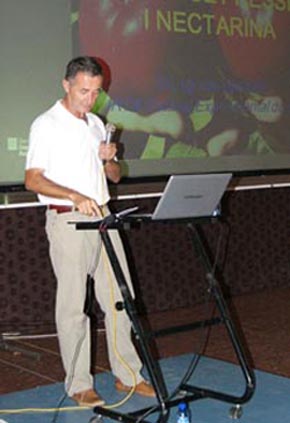
At the end of summer, varieties such as the 'Honey Cascade' and 'Tarderina' mature during the last week of August. The first is characterized by color on all of the fruit, as well as its sweet taste, free bone, good quality and caliber a little limited at the time. The second presents fruit coloration on 80-100% of the surface, sphericity, good consistency, sweet taste and quality.
During the first week of September it ripens the variety 'Late Fair Zaitreme' of balanced taste and good production on old wood potential so that the entry into production is slower. It warns a coloration on more than 60% if fruits lighting properly (use of open forms). In the same period, ' ASF 06-19' is the most remarkable variety of sweet taste for good coloration (more than 80% of the surface of the fruit and barely visible lenticels even by the year 2010), the caliber of the fruits and good productive behavior. A week later, it is the opportune time for the collection of the 'September Star' variety, balanced flavor and color of 60-100% of the fruit, spherical shape and good consistency.
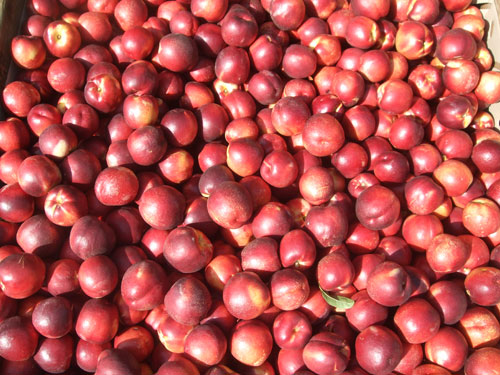
In short, flat peaches, also referred to as 'Paraguay' belong to the group variety that has experienced the strongest growth in recent years in our country, with a land area estimated at 5,400 hectares in the past year. Of these, a total of 1,600 hectares are located in Catalonia. The planting of flat peaches confined mainly to Murcia, Catalonia (zone de Baix Segrià-Lleida) and Aragon (area of Bajo Cinca). By the year 2010, the producers have perceived price between 1.5 and 3.5 times higher than the varieties of peaches and nectarines of similar age, depending on the time and the quality of the fruit (in order of importance: caliber, color and enclosure cavity pistilar), although (especially the thinning and harvesting) production and packaging costs are also higher. For this reason, it is estimated between 0.30 and 0.45 EUR/kilo for the year 2010, according to the date of collection and variety. He is expected that in a future stage with productions strongly upward in different regions of Spain, the prices levied by the year 2010 will not be sustainable or short-term or long-term. As positive aspects, it should be noted the progressive increase of exports and the decline in prices to the consumer, what will be a stimulus to consumption.
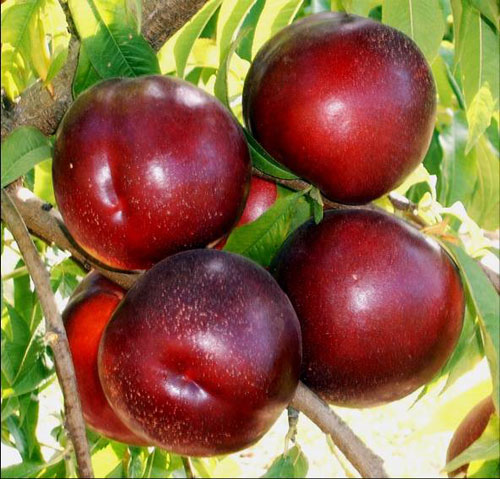
Although it treats a typology of fruit cultivated, traditionally, to scale familiar in diverse areas of Spain, Italy and France, his interest has had to fundamentally to these factors: the to scale commercial introduction of new varieties of sweet and greater flavour colouring, a better closing of the cavity pistilar, a greater aptitude to the manipulations and an enlargement of the calendar of recolección.
At present has of a wide range varietal whose period of recolección covers from finals of May until finals of September, being the majority of white meat. In flat nectarine, the range varietal is still limited and his production is small compared with the one of the flat peach; it situates mainly in the zone of Lleida and of the Low Cinca (Huesca). In general, it considers a typology of remarkable fruit since aúna in a same fruit the sweet and aromatic flavour and the flat form, that facilitates his consumption; even more in the varieties of flat nectarine. Said peculiarities allow to the producer associate the flat form, that is easily identifiable in the linear, with the sweet flavour. This does not occur in the varieties of nectarine and peach, where similar appearances of the fruit (colour and calibrate) comport flavours very different (sweet or acid).
The cultured varieties proceed of France (ASF, INRA and INRA-Quartier Neuf), Italy (CRA-Rome and CRA-Forli) and Spain (Nurseries Provedo). To way of example, ‘Sweet Cap Courierslarflat' has been the most spread variety in Spain, gone on down ‘UFO-3 Isfroplat-3D' and ‘UFO-4 Isfroplat-4D'. Later, they entered different varieties of ASF (‘Flatpretty', ‘Flatnice', ‘Flatprincesse', etc., of the series ‘Regalcake'), of INRA-Quartier Neuf (series ‘Platty') of the CRA of Rome and of Forlí (series ‘UFO' and ‘IFF', respectively). More than 70 new varieties have been evaluated by the IRTA from the year 1996 and the information obtained on his behaviour and quality has recopilado in detail in a book on this particular typology of fruit (Churches and Carbó, 2009) and in the article of Sorrenti et al. (2010). To continuation, describe in order of recolección those varieties evaluated in the IRTA that can have a greater interest for the producing sector. If it does not specify the colour of the pulp, this is white. All the varieties described in the following lines are of sweet flavour.
In the second week of June, ‘Sweet Ring PlatiforoneD' is the first variety of yellow pulp in maturing. Basically it contributes a quality and good colouring, but the production and the calibrate are limited. Around the middle of said month, ‘UFO-3 Isfroplat-3D' has been the most spread variety in all the zones of production of Spain. Of her they stand out his quality gustativa, the good colouring and a production and calibrate upper to the two precedents, although has a problem: it is a sensitive fruit to the oidio. Besides, ‘Sweet Ring PlatiforoneD' still is the variety of reference although his interest limits at present to the most precocious zones by his vicinity and minor calibrate and production that ‘UFO-4 Isfroplat-4D'. Nowadays, this last is the most important variety of which mature during the second fortnight of June. Like main difference, ‘UFO-4 Isfroplat-4D' possesses a calibrate upper in some 4-5 mm to ‘UFO-3 Isfroplat-3D' and a greater production. His quality gustativa is remarkable, as well as the colouring and the good closing of the cavity pistilar in normal years. In summary, keeps on being the variety of reference and also the most planted in his period, what has supposed an important beak of production that is precise to complement, so much before as afterwards, with other varieties. Solapada With this, the variety ‘Galaxy' pertinent of the USDA (United States), contributes a calibrate upper to ‘UFO-4', a high productivity, a better closing of the cavity pistilar and a good consistency of the fruit.
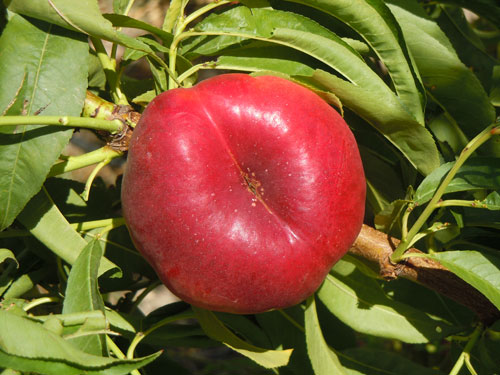
Already in the first week of July, ‘Platifirst' is the main variety because of the presentation of the fruit (scarce vellosidad), his red colour, calibrate upper to ‘UFO-4 Isfroplat-4D' and quality. This ‘Paraguayan' presents a good closing of the cavity pistilar. To continuation, ‘ASF 07-92 D' is a new variety of calibrate upper to'UFO-4 Isfroplat-4D' with a perfect closing of the cavity pistilar. An afterwards mature week the variety ‘Pink Ring PlatifortwoD', experimental denomination ‘IFF-1180', of similar characteristics to to'UFO-4 Isfroplat-4D' regarding presentation of the fruit, consistency, quality and closing of the cavity pistilar, but so much the calibrate like the productive potential are upper.
Around the middle of July, collects the variety ‘FlatbeautyD' (ASF 07-95) that contributes a better colouring, fruit more attractor trucks by the epidermis more brilliant and the minor vellosidad, as well as a closing of the cavity pistilar perfect. During the third week of July, recolecta the second variety of the series ‘Platty' designated ‘Platibelle'. This last characterises by the excellent presentation of the fruit, with epidermis of red colour appeal without hardly vellosidad and with a good closing pistilar, even in difficult years. Fruit of calibrate half around 75 mm and with lower thickness that ‘Sweet Cap Courierslarflat' and, in consequence, lower productive potential. ‘Platibelle' Has a consistent pulp, sweet, aromatic and of good quality. In the first years of production presents a greater sensitivity that the varieties of his period to the desgarramiento peduncular of the epidermis that diminishes with the age of the tree.
The month of July finalises with a variety more: ‘Platifun' of the series ‘Platty' and characteristics very similar to ‘Platibelle'. In both varieties, the tree is of floribundidad and inferior rusticity to ‘UFO-4 Isfroplat-4D' or ‘Sweet Cap Courierslarflat', varieties of reference. This last coincides, in time, with the variety ‘ASF 07-96 ASFPBF07-96D' characterised by an excellent closing of the cavity pistilar, epidermis of red colour precocious and intense brilliant and without hardly vellosidad, calibrate half of 75 to 80 mm, consistent pulp and very good quality.
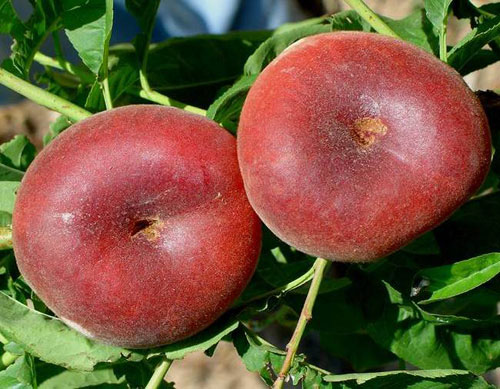
At the beginning of August, ' Sweet Cap Maillarflat', still is the most spread and variety produced throughout the country, due to its exceptional characteristics as potential production, calibre, hardiness and taste quality. In the middle of this month, 'Regalcake 31 Flataugust' gives continuity to 'Sweet Cap Maillarflat', but it is a time complicated by the high stock of this variety in refrigerator. With the third week of August, comes 'Regalcake 33 Flatprincesse', the variety of reference due to the production, calibre and good gustatory quality, although the color and the enclosure pistilar difficult years can be improved. At the same time, ' ASF 07-98 ASFNBF07-98' provides a perfect pistilar, during the period 2009-2010 enclosure, more than 75 mm calibre and a good production. In spite of this, the color is inferior to varieties of early August and collection will be done in two or three passes to homogenize it and optimize it. A must for all varieties of collection from mid-August it is green, so pruning favouring the lighting of the fruits. Finally, ' Flatmoon ASF 07-99' and 'Flatlatecake' are more late harvest varieties. The first, which is collected in mid-September, provides a good coloration, average around 75 mm caliber, a good enclosure of the cavity pistilar, even during the year 2010, consistent pulp of sweet taste, good quality and good productive behavior. 'Regalcake 36 Flalatecake' collection overlapped with 'Flatmoon' has a high production potential and potential of higher caliber, but both the colour of the fruits and the closing of the pistilar cavity are lower to ' Flatmoon'.
Conclusions and Outlook
Currently, the peach tree is the most important species of sweet fruit, Spain, being the second largest producer of the European Union and the most competitive on the basis of the offered quality productions and lower costs with respect to Italy, main competitor country. This has helped the improved technology of production and the important varietal conversion that has enabled the introduction of new varieties of better presentation, quality and adaptation to the demands of the consumer. Despite this, the EU production is most years to limit over-production and stagnant consumption. This is mainly due to the lack of quality at destination and the irregularity of the same, so the price crisis have been and they will probably recur, which poses a threat to the future viability of the sector.
In a context of progressive increase of production, is considered key to the future increase both domestic consumption and exports to new markets, mainly the East and Middle East countries. For this, the improvement of customer satisfaction is considered essential and will not be possible without a definition and identification of the product at destination, particularly as regards the fruit flavor. The convenience of consumption of the nectarines and peaches and nectarines flat, together with its sweet and aromatic flavour has led to a good economic return for producers and increasing production, to the detriment of the peach and the 'Pavia'. This is a clear example of the user's response to a fruit that can be identified easily and its consumption is satisfied by maintaining a constant quality. They must also set the parameters of harvest (firmness, content of sugars, color, etc.) for the main varietal groups and times of collection in order to avoid collecting early, fuelled by speculative prices, the early colorization and the caliber of the majority of new varieties.
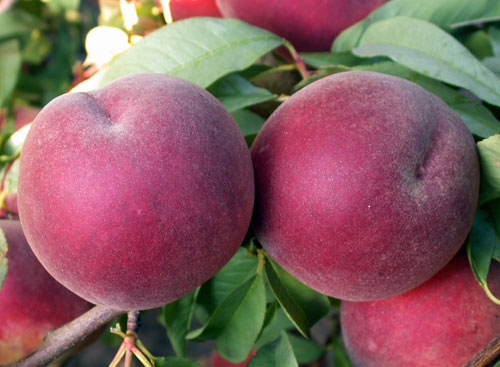
Moniliosis: analysis of various control systems
The technical session on 28 July was attended by a second thematic block on Monilinia in mecolocotonero. Josep Usall, researcher of the UDL-IRTA (Lleida), along with Miquel Peris, specialist of the IRTA - Experimental Station of Lleida were offered this presentation. In short, brown rot caused by fungi of the genus Monilinia is one of the most important diseases of stone fruit. Its effects can be seen on flowers, buds and fruit, especially peaches, nectarines, cherry, apricot tree, almond plum, etc. Depending on the volume of production and the effects that cause, this fungus has greater impact on peach tree and Nectarine, especially in middle and late harvest varieties. In other words, when the weather conditions conducive to their development. The appearance of the disease in fruit may tenir place, both in field after harvest. This makes more problemàtica the appearance of the Monilinia, that often arises when the fruit is already at the point of destination.
In general, the disease caused by the Monilinia is present every year in the varieties collected from mid-August, but if the weather conditions are favorable may appear throughout the summer. The level of damage caused by the fruit is linked above all to moisture, so if there is abundant rainfall in the close to the harvest period, losses are important.
In the actuality, the main method of control of this illness is the application of products fungicidas in field. However, they exist a series of cultural measures that can help to reduce the presence of the same. For example, the elimination of primary inoculum. The pathogen happens the winter in the field mostly in the fruits momificados, peduncles and chancres. Therefore, it is convenient to delete the organs affected in the moment of the poda. Besides, it is important to avoid that they remain fruits on the tree that can momificar after the harvest.
Another measure is the supresión of secondary inoculum. If the presence of flowers or shoots affected by the illness in spring is very high, recommends delete them of the finca since they are source of back inoculum for the fruits. Equally they could delete and withdraw of the field the fruits that initiate the pudrición 12-15 days before the harvest.
Likewise, advises a handle of the microclimate. Any action that increase the ventilation and the insolación of the trees helps to reduce the risk of infection of the Monilinia. Between them, the handle correct of the poda (of winter and summer), a suitable distance between the trees, the control of the grass in the plantation and avoid excesses of irrigation and credited are keys.
Other actions to realise/realize for reduir the proliferation of the illness during and after the harvest atañen to a suitable manipulation of the fruit in recolección. For example, by means of the use of boxes and clean packagings, avoiding strike and expose in the sunlight the fruit during the harvest, as well as a transport and accurate storage./p>
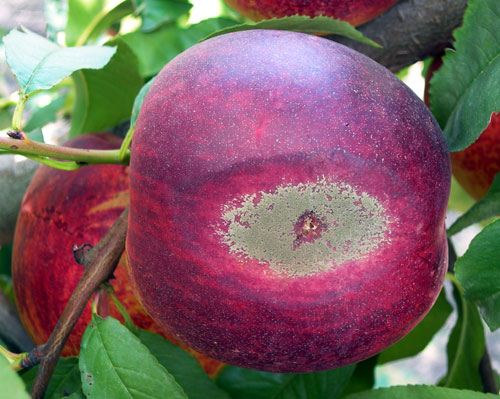
Chemical control in field is still the main strategy for the management of the Monilinia. Authorized fungicides belong mainly to the family of the triazole (metconazole, cyproconazole, fenbuconazol and difenoconazol), and in smaller numbers other families: bencimidazoles, (thiophanate-methyl), dicarboximidas (iprodiona), anilopirimidinas (ciprodinil), fenilpirroles (fludioxinil) and anilidas (fenhexamida). Other products such as tiram, clortalonil, mancozeb or copper compounds have been registered also to cope with the disease.
As a result of the existing problems in controlling this disease, in doubts about the effectiveness of some products and changes in the availability of chemicals, was raised, at the request of the production sector, the completion of a series of tests to assess the effectiveness of the different products available for the control of Monilinia fungicides spp. in peach tree used in various implementation strategies.
The tests have been developed between 2006 and 2010, several peach tree commercial plots located in the fruit area of Lleida. These tests have focused on controlling the disease in the period of ripening of the fruit covering the period of maximum sensitivity of the fruit between 28-35 before and during the harvest.
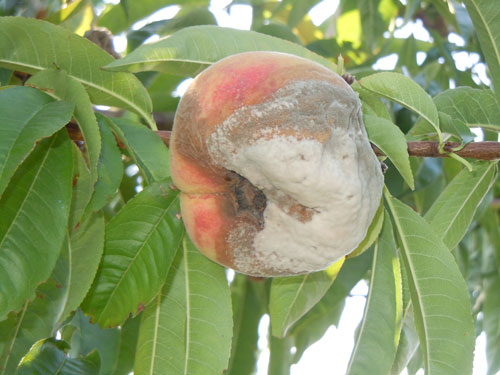
Treatment, i.e. products used and the timetable for implementing strategies, have varied in different years depending on the registered products available and the results obtained in previous trials.
To the growing concern for waste products on the fruit, in 2009 an analysis of residues of various treatments. A number of conclusions were obtained from the analysis:
•Incluso in conditions of a high potential for development of the disease, with a proper combination of fungicides products can get a very considerable decrease in the incidence of the same.
•The maintenance of a good coverage of the plantation where there are favourable conditions for infection between 30 and 15 days before the harvest is essential to get good control of the Moniliosis.
•Desde point of view of the effectiveness of the products, the metconazole has shown the highest disease control in most of the trials, although it has always applied before the 14 days prior to harvest.
•All products, with the exception of the ciprodinil and the fenhexamida applied in two treatments between 30 and 15 days prior to harvest, have presented a significant control of the Moniliosis, both field on postharvest, compared to the untreated control.
•Non as the tiram, clortalonil and thiophanate methyl presented a under control without statistical differences with the witness under conditions of high pressure of the disease.
•All applied products were detected in the analysis of waste although in a few levels well below the fixed MRL.
In the field of chemical control, these trials have shown the importance of having good coverage between 30-35 and 15 days before the harvest. This coverage will be alternating products which have presented a good control of the disease. Doing so will prevent focus on one of these products or family for repeated use, in order to avoid the emergence of resistance.
In another order of things, it is essential to implement all cultural measures to maintain the plantations in a proper state of health to reduce treatments and retain the current effectiveness of fungicides as long as possible.
